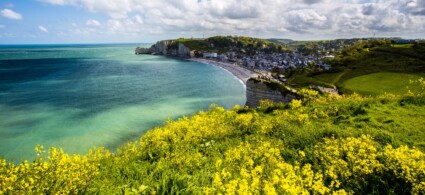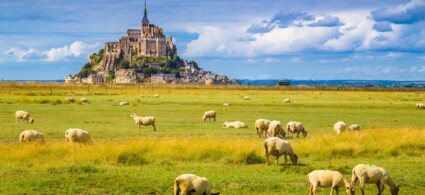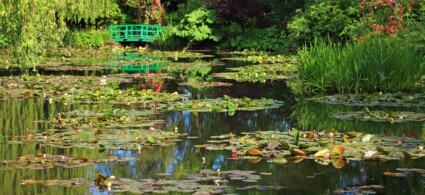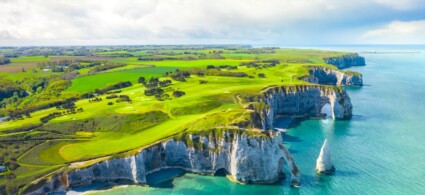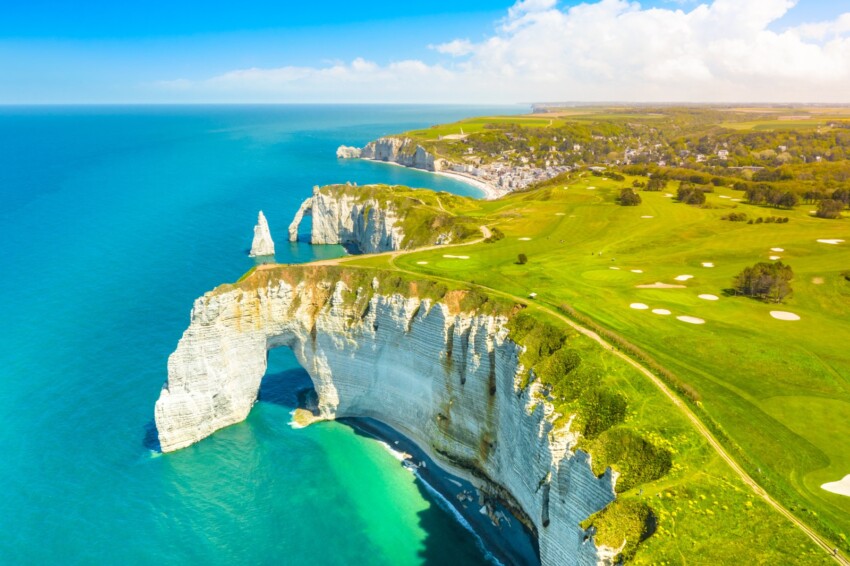

Cradle of the Impressionists, who were enchanted by its incredible chalk cliffs, Normandy invites you to an unforgettable experience, less than an hour from Paris.
You will discover a unique land, with an incredibly rich architectural, cultural and natural heritage: on the Channel side, the alabaster coast and its valleys, the Côte Fleurie and the seaside resorts of the Belle Epoque await you, while on the mother-of-pearl coast, you will find the landing beaches and World War II sites.
The inland part, on the other hand, characterised by bucolic green countryside, is dotted with villages with thatched cottages and marvellous medieval towns: Rouen, Bayeux and Caen, with their historic centres and imposing Gothic buildings.

On 6 June 1944, the beaches between Cherbourg and Le Havre were the scene of one of the greatest military operations of the 20th century: D-day, the Normandy landings. American and British allied forces launched an unparalleled offensive to liberate France from Nazi occupation.
Today, these places of memory are among the most fascinating sites in the region: Omaha Beach, Arromanches and the other beaches of the Cote Fleurie leave no one indifferent, because they tell a recent page of modern history, one of the bloodiest and most terrifying battles of the last century.
Military cemeteries, such as the American one, defensive batteries, memorial museums, craters created by bombing raids and many original artefacts await you, mute but still very relevant evidence of the barbarity of war.

The Abbey of Mont Saint Michel is one of the wonders of Normandy. This spectacular place stands at the centre of a magical and bewitching natural site: perched on a tiny island, the village and the abbey are surrounded by an incredible landscape, majestic and changeable, changing with the hours, the tides and the light. The sea, with the rhythm of the tides, recedes, making the village accessible on foot or surrounds it, turning it back into an island.
Listed as a UNESCO World Heritage Site, Mont Saint Michel is one of the most visited places in France and a must-see on a trip to Normandy.

One of the jewels of Normandy are the white cliffs of the Alabaster Coast. From Fecamp to Dieppe, these incredible chalk cli ffs have inspired generations of artists, starting with Monet’s Impressionist movement.
The cliffs of Étretat form a natural landscape that is absolutely unique: walk along the paths overlooking the English Channel and admire this wonder of nature from above. The small town of Etretat is also well worth a visit with its pebble beach, breathtaking sunset views of the cliffs, Arsenio Lupin’s house and the Jardins d’Étretat.

Along the course of the Seine, about a hundred kilometres from the English Channel, Rouen is a charming port city, famous for its marvellous, perfectly preserved medieval old town.
This city, rich in art and history, has been the refuge of many impressionist painters such as Monet, who immortalised its imposing Gothic cathedral.

One of the unmissable places in Normandy is Monet’s house in Giverny: here art, nature and history blend harmoniously to create an indescribable atmosphere.
It was here that Claude Monet stayed until his death in 1947. In order to live surrounded by beauty, the great painter shaped nature according to his artistic needs, creating a Japanese-inspired water garden. His family home is also marvellous: you will feel as if Monet has only temporarily absented himself, everything has remained as it was then.

Between beaches, harbours and quaint villages, the Cote Fleurie offers visitors one of the most beautiful parts of the Normandy coast.
Honfleur, with its picturesque slate houses overlooking the old harbour, old churches and picturesque views, is a small village to be admired. Its well-preserved old town and its maritime vocation captivate visitors from all over the world.

Miraculously spared from the bombings of 1944, Bayeux preserves an exceptional architectural and historical heritage. This small town in Calvados is world-famous for its huge medieval tapestry, commissioned in the 11th century by the brother of William the Conqueror: an account in pictures of the conquest of England by the Duke of Normandy.
Next in beauty and majesty is Notre-Dame Cathedral, a masterpiece of Norman Gothic architecture.

Divided only by the course of the Touques River, Deauville and Trouville are Normandy’s most famous seaside resorts. Here you can breathe in all the retro charm of the Belle Epoque, with art deco wooden cabins, prestigious buildings and colourful beach umbrellas to shelter the ladies from the wind.
On the left bank, Deauville is the chic destination with its elegant residences, racecourse, casino and incredible seaside villas, while on the right bank, Trouville cultivates a more homely atmosphere, with its fish market, harbour and grand 19th century houses.
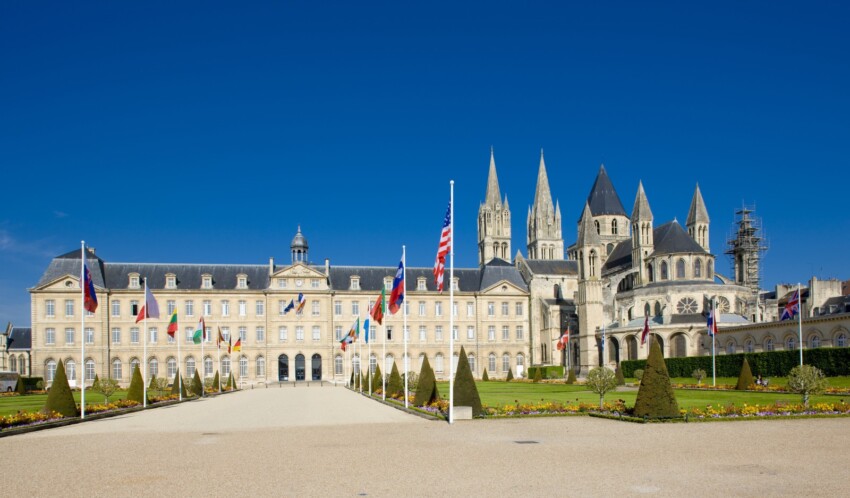
At the confluence of the Odon and Orne rivers, the city of Caen was chosen by William of the Conqueror to build an imposing defensive castle and two majestic abbeys: the Abbaye aux Hommes and the Abbaye aux Dames.
Almost 80% destroyed by bombing, today Caen preserves the two abbeys, a small part of the old town and the castle intact. A visit to the war memorial is a must, after exploring the alleys and squares of the medieval quarter of Vaugueux.
In the following map you can see the location of the main places of interest mentioned in this article.
